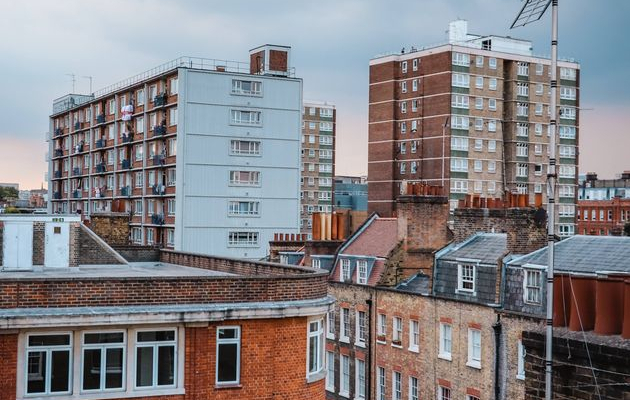 A view of central London. Photo by Emily Wang
A view of central London. Photo by Emily Wang
Local authorities don’t just need to ‘engage with’ communities, writes Josh Fenton. They need to give them a genuine role in decision-making
Councils know that major, neighbourhood-transforming developments need community buy-in, not least to reduce the sense of disenchantment that prevails in many communities and repair fractured relations of the past. But for residents faced with public participation programmes, deciding whether to engage means grappling with the often baffling question of how committed local government is to acting on what the public tell them.
Tools have long existed to assess such participatory exercises. American public policy analyst Sherry Arnstein’s ‘Ladder of Participation’, drawn up in 1969, ranked the extent of citizens’ power to influence outputs. Its eight levels range from non-participation, to tokenistic gestures that simply aim to placate, and, finally, true citizen control.
Real delegated power – such as citizen-led initiatives and the ability to veto developments – is rare. And even when it is offered, it’s hard for residents not to be swayed by the technical jargon and the status of those in power. Newham Council in east London appears to be taking such concerns seriously. Keen to avoid the mistakes made in the council’s current Canning Town project – which since 2007 has been regenerated as a neighbourhood that some locals call ‘Canning Town but with the soul ripped out’ – Newham says it is taking a rigorous approach to ensuring true community participation. In the shadow of cranes and half-built apartment buildings, Custom House, an area to the east of Canning Town, is soon to receive its share of reconstruction, estimated to begin in 2021.
A key part of the plan to shift the narrative of community engagement in Custom House has been the introduction of a community steering group in December 2018. Some interesting voices were among the 14 people that put themselves forward for the opportunity; an architect, a civil servant specialising in housing policy, and a mum-of-two living in one of the ‘urgent decant areas’. After the residents vote, the group of six local residents and council representatives sat for the first time in April 2019. Newham has also trialled alternative means of engagement to make participation more accessible for the hard-to-reach, including a Halloween party-cum-regeneration discussion.
The council’s efforts have been duly noted by the residents, especially the community’s representative group, PEACH (The People’s Empowerment Alliance for Custom House). Over recent years, PEACH has used its lottery funding to prepare alternative development proposals, backed by independent consultant advice. This perception of involvement has kept morale high among members – talk to the launderette owner and he will tell you how well things are going, that the project is moving in line with PEACH’s recommendations.
However, beyond the posters plastered around the area and the spooky discussions lit by pumpkin lanterns, the image of Newham as being committed to ‘working closely with locals’ becomes murky. Despite the process, there are still shades of tokenism, still signs of the public being kept at arm’s length from key decisions. Though some PEACH members are content, others resist being duped. The group put a clear proposal to the council on the ratio of socially rented to private affordable housing, yet the council is yet to declare its final position, simply reciting a commitment to ‘genuinely affordable housing’.
This links with Newham’s general communication strategy, which is extensive, but light on detail. The call for participants to the community steering group omits any detail on the scope of their remit and whether the group has any delegated power or veto capability. The failure to set out clear expectations underlines the possibility that the group have been armed with little more than rubber stamps.
In light of this, it is hard to call the working relationship a ‘partnership’ – the minimum level that Arnstein’s ladder classes as meaningful citizen power. That said, it is clear that both within the council and general public there is a desire to have the conversations that would develop a public realm to benefit the majority.
London will always be shaped by a complex web of interactions. If the city is to continue to thrive, we need to make sure every part of that web is able to operate at its best, from private and public bodies to the individual. As such, each of the stakeholders involved has a role to fulfil. As communities, organisations like PEACH are a model of proactive participation we can look to replicate. On the part of councils there should be a continual effort to make sure that their engagement with the public is effective, and not a tick-box.
It is still some time until the bulldozers arrive at Custom House, so there is time for the council to give clear answers to issues raised by the residents. Given that the community is already active, the council should be mindful that it doesn’t find itself in a position observed by Arnstein, where power is wrested by the powerless rather than given by the powerful.
This article originally appeared in Icon 193, the July 2019 edition

















